What Do Soldiers And Marines Carry In Their Backpacks?
A military backpack has many uses and functions. It needs to hold enough equipment and supplies for a soldier for entire missions. Yet it also needs to be comfortable, easily accessible, and highly durable.
Once upon a time, many centuries ago, soldiers in combat, especially those on the battlefield, didn’t have a backpack. The essential items they needed were on a wagon that followed them. Once firearms were invented, soldiers suddenly needed to carry rifles and muskets, ammunition for these firearms, and cleaning equipment. Furthermore, there was no longer the need for a wagon to follow them around, especially through hostile and dangerous conditions. So, soldiers began to carry all of their own equipment on their own.
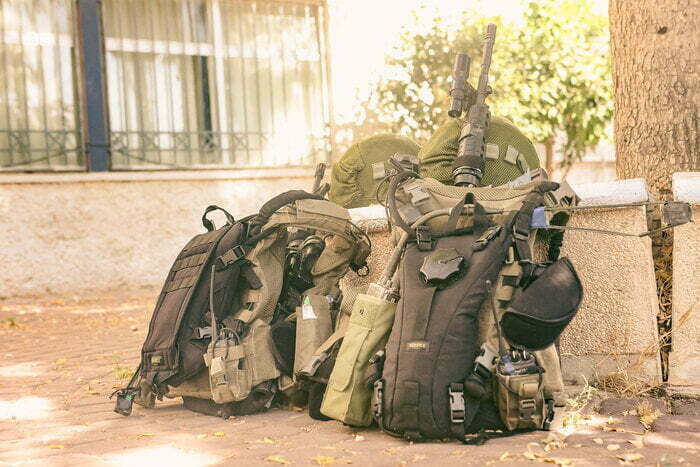
What Backpacks Does The Army Use?
In the same way that the US army has specific height and weight requirements for all soldiers entering the army, they also have specific guidelines and requirements of what backpacks their soldiers can carry in terms of size, shape, durability, and color.
Black tactical backpacks are, by US law, the only color except for matching camouflage that may be worn on soldiers’ backs in the military. If the backpack is not black or has the same camouflage pattern as the soldier, the bag may only be carried in the soldier’s hands. This is relevant for the army’s OCP only (Operational Camouflage Pattern), so it applies to the US army, the US Space Force, and the US Military Force. The US Navy and Marine Corps have different uniforms and regulations in place. Backpacks used by the Marine Corps may vary slightly in size, color, and weight distribution to that of the US Army.
The British Army has different requirements and primarily use the SOURCE Virtus Soldier System for their soldiers, which is a fully integrated soldier system including a backpack, complete vest protection, a MOLLE belt, assault pack, short back bergen, and more.
What Do Soldiers And Marines Carry In Their Backpacks?
There are many essential items mostly all soldiers need to be carrying at almost all times. These backpacks are the soldiers’ lifeline, so they need to have the life-saving and essential equipment to survive in harsh and dangerous conditions, even with no fresh water or food sources nearby.
Hydration Bladders
This form of hydration replaces the old-school hydration canteen soldiers used to drink on the go. Once the bladder is filled with water, the tube attached to the bladder can be diverted through to the soldier’s mouth to have easy access to water on the go.
SOURCE’s hydration bladders have the added benefit of being extremely lightweight, BPA and phthalate-free, self-cleaning, and anti-bacterial with Grunge-Guard technology so soldiers can ensure their water is not contaminated at any point.
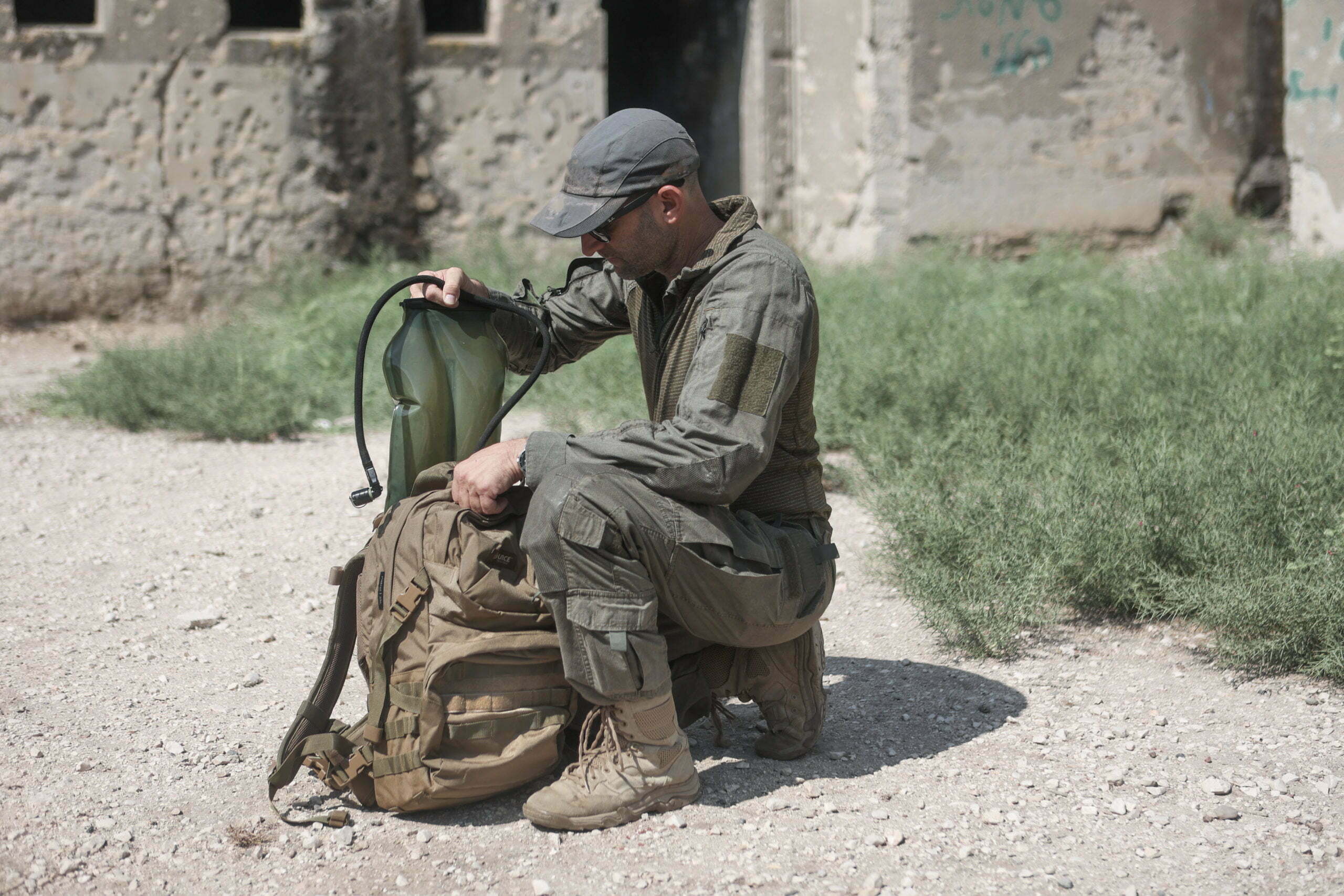
First Aid Kits
Asides from the combat medic, each soldier must carry a basic medical kit to treat minor to moderate wounds. The idea is that the soldier can stabilize even severe injuries until they can receive proper treatment or assistance. The first aid kit also includes any medicine they need and much-needed sunscreen.
On The Go Food
Besides the typical power and protein bars that will be a constant in a soldier’s backpack, soldiers need warm food to keep themselves going while on a mission. Several food sources in the US military are equipped with flameless ration heaters (FRH), meaning a wet meal can be heated by 100F in 12 minutes with no visible flame, according to the military specifications.
Gun Cleaning Kit And Ammunition
A soldier must keep their gun clean and in good condition at all times. Having spare ammunition and a gun cleaning kit is essential to ensuring their gun is in good condition. Having a well-functioning gun can save a soldier’s life at any given moment, which is why this is part of the packing list.
Body Armor
A soldier doesn’t need to wear their body armor constantly. Although each soldier may need to be equipped with different types of body armor at any time, they need to be able to store all parts in their backpack if the extra protection is needed, whether it’s by MOLLE or if it fits inside the bag directly.
Compasses
An essential tool needed in case a soldier gets lost. Soldiers are often found in quite literally the middle of nowhere with little to no trail markings or signs, so they need to have a compass to be able to direct them in the right direction.
Should a soldier find themselves without a compass, they can use navigational skills to determine which direction to go in, by using a regular watch as a compass or the shadow stick method.
Shelter
Usually a tent or tarp, a soldier needs to have protection when they sleep, to protect them from the sun, wild animals, or insects, or to act as an army base where they are situated. Often, soldiers may carry one part of a much larger tent, but they may also be required to carry a small one-person tent should the situation require.
Signal Mirror
One essential piece of survival equipment is a signal mirror. When used correctly, it can reflect sunlight as far as 7 miles on a clear day to alert people nearby of the soldier’s location and save that soldier’s life.
Sleeping Bag
Quite simply, for the soldier to sleep in. They go through hazardous conditions daily, so having a warming sleeping bag to crawl into at the end is the bare minimum needed for survival. Soldier sleeping bags are also needed for protecting the soldier from freezing during the night and catching hypothermia.
Clothing
Having a spare set of clothes, especially socks and underwear, is necessary for soldiers’ hygiene. When the soldiers in WWI didn’t change their socks or keep their feet dry, they developed a condition now commonly known as ‘trench foot’, caused by someone’s feet being wet for too long. Having spare socks to change into is one way to ensure a soldier doesn’t develop trench foot during their mission.
Tactical Flashlight
Unlike your typical flashlight, a tactical flashlight is designed specifically for military use. It has stronger lumens than a regular flashlight, is lightweight, robust, durable, and has extremely long battery life. A soldier may need to navigate during the night time, so a tactical flashlight is necessary for them to see where they are stepping.
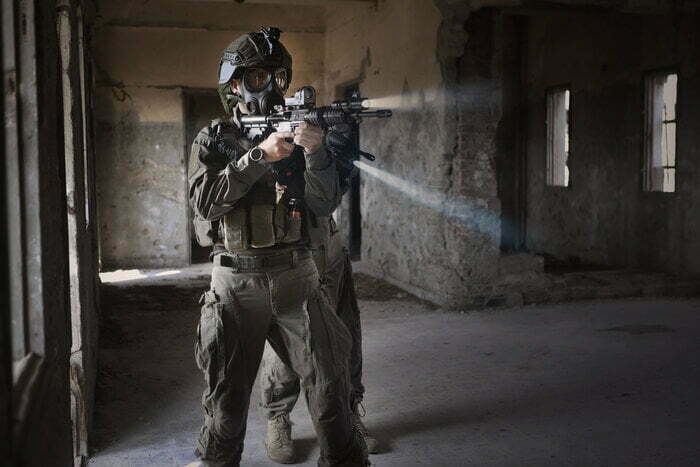
Will You Find The Same Equipment In Marines Backpacks?
Most likely, yes. The Marines may have some more unique requirements. Still, the general idea is that they also need to have food, shelter, clothes, tactical flashlights, body armor, hydration bladders, first aid kits, gun-cleaning kits, and compasses.
Military Assault Packs: Are They The Same As Backpacks?
No. Military backpacks are intended to carry total supplies for extended periods. Assault packs are intended primarily for shorter periods or even day missions. While a military backpack can hold around 96L, assault packs hold only around 20L. They are much smaller, lighter, and easier to carry during the daytime.
What Soldiers And Marines Pack In Their Assault Packs
Assault packs are used on average for 1-3 day missions. Only the essential supplies are carried during this time.
Hydration Bladder
The number one most important thing for a soldier is to have a water source. SOURCE’s 20L assault pack is the ideal size for an assault pack which also comes with a 3L hydration bladder inside for quick and easy hydration.
Sufficient Supply Of Food
Along with food comes water. A soldier needs to ensure that they have enough food supply for days after the mission. Whether the mission is one or three days, soldiers need to have a sufficient amount of food should the mission take longer than expected.
Change Of Clothes
Changing clothes is another necessity of a small mission. Being hygienically clean and sanitary comes mostly from changing clothes, even if no showers are around. Or, if the soldier gets stuck in a natural shower of rain, they need to be able to change into dry clothes to avoid trench foot and skin irritation.
Try To Picture A Soldier Without A Backpack
It’s hard to. Or try to find a picture on Google. There are virtually no photos of soldiers that walk around without a backpack or assault pack on their back. These bags are designed to last the harshest weather conditions and to carry equipment and essentials that are needed to survive.
What Can I, A Regular Citizen, Take From This Information?
Even if you aren’t a soldier, you can transfer this knowledge to your own hikes and adventures. Make sure you carry enough water, food, shelter, a compass, and all the other essentials (besides tactical gear, of course) that fit in your tactical backpack to be fully prepared for your hikes.
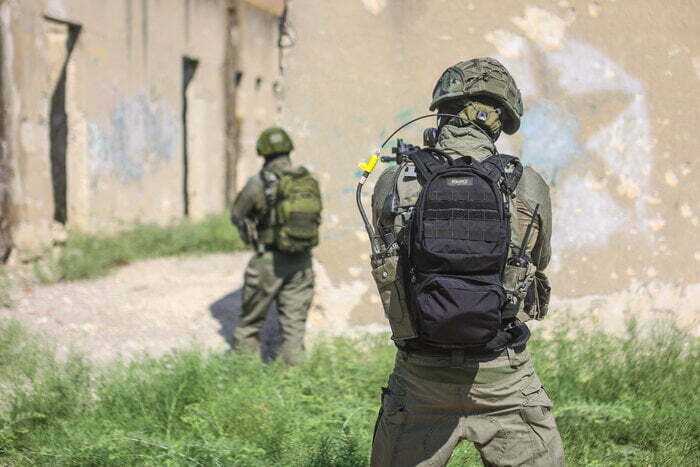

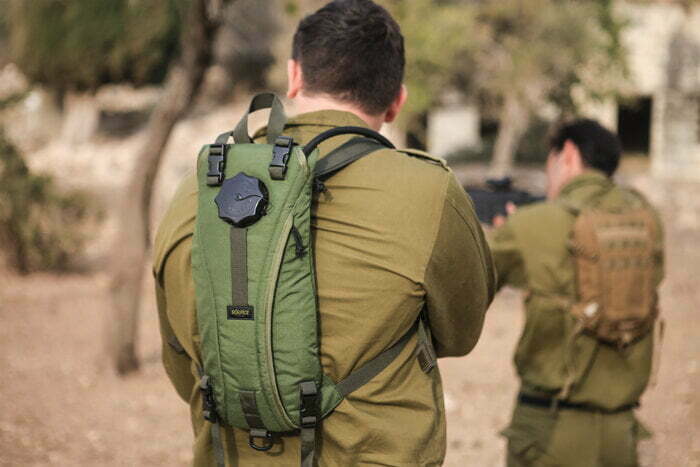
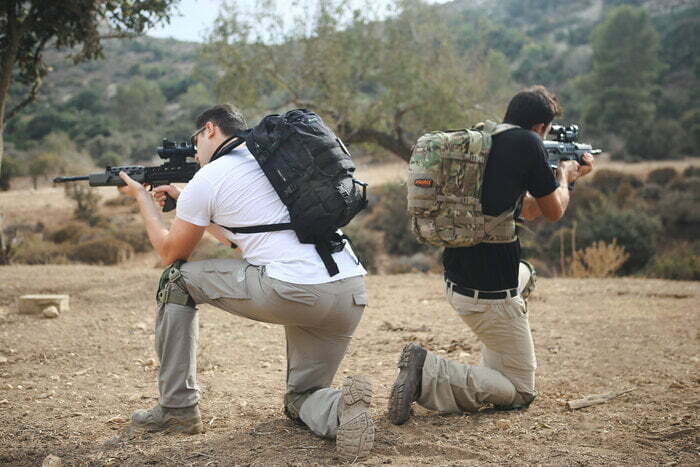
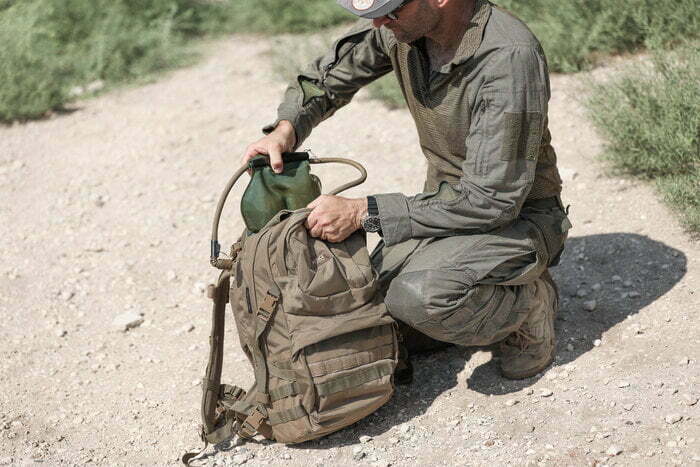

 Facebook
Facebook google
google